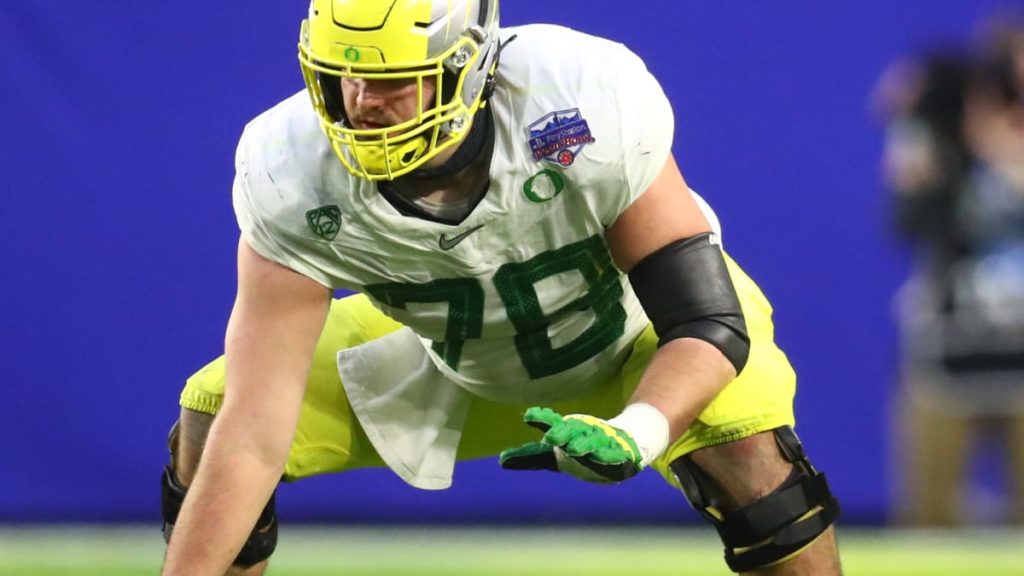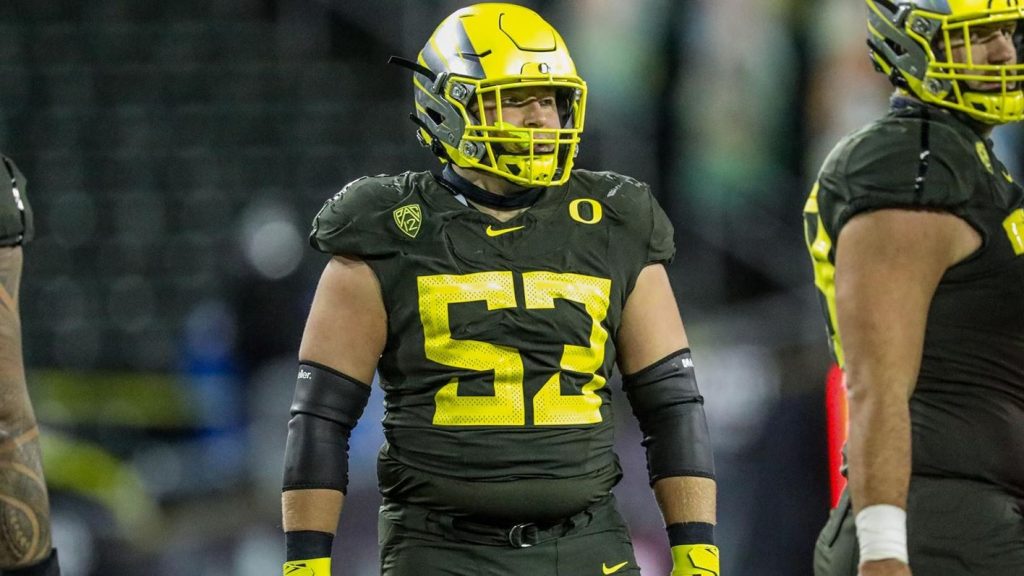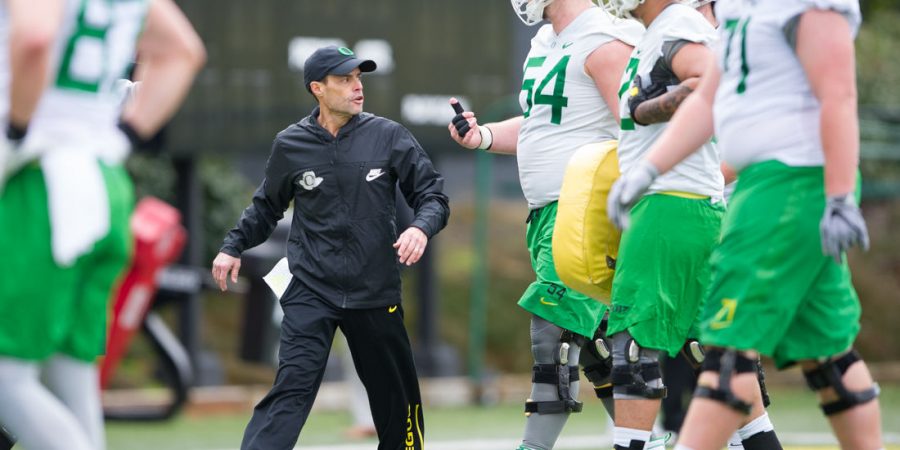Few things in recent memory were as protractedly loathsome across the board as 2020. And while the residuals of the past year linger to this day with COVID protocols remaining in place for most areas of the country, this spring offers a level of hope and optimism that simply did not exist at this time one year ago.
As it relates to the Oregon football program, the spring of 2021 represents an opportunity to build upon what was accomplished in 2020, as well as a chance to right some of what went wrong during a condensed season. Yes, head coach Mario Cristobal and the Ducks celebrated (however controversially) their second straight Pac-12 Conference title, though they finished with a 4-3 record that was punctuated with a dud Fiesta Bowl performance against 10th-ranked Iowa State.
Similarly, the offseason offered its own mixed bag of emotions. The Ducks bid farewell to accomplished defensive coordinator Andy Avalos, who left Eugene after two seasons to take the head coaching job at his alma mater Boise State, before welcoming former Cal defensive coordinator Tim DeRuyter as his replacement. Weeks later, Ducks starting quarterback Tyler Shough entered the transfer portal after an up and down 2020 season, providing even more uncertainty and intrigue around the quarterback position heading into the spring.
With spring practices now officially underway at Oregon, WFOD is taking the time to examine the prevailing storylines at each position group, while exploring how these questions could impact the Ducks entering the fall.
Today, our Spring Storylines series continues with a look at the offensive line.

How much growth will we see from Oregon’s offensive line in 2021?
A COVID-shortened 2020 season offered everyone a peek at what life for the Oregon offensive line would look like in the immediate post-Penei Sewell, Shane Lemieux, Jake Hanson, Dallas Warmack, Calvin Throckmorton, and Brady Aiello. And if we’re being honest, the results weren’t great.
After paving the way for the Pac-12’s second-best rushing offense in 2019 (174.86 yards/game), that stellar collection of offensive line talent either graduated or made the decision to opt-out of the 2019 season, forcing the Ducks in the span of a disrupted offseason to go from possessing one nation’s most experienced offensive line units, to one of the nation’s least experienced groups. In fact, the Ducks returned just one player, Steven Jones, who had starting experience going into 2020, and that “experience” consisted of all of all one game for Jones, which came as a true freshman in 2018.
In the end, Oregon’s new-look group in the offensive trenches fell well short of the lofty standard established by the group before, as the Ducks finished seventh in the Pac-12 last season in rushing offense (166.71 yards/game) displaying a consistency that ebbed and flowed throughout the year.
Entering 2021, the expectation is for this group to take a considerable leap forward, as Cristobal and offensive line coach Alex Mirabal have not been shy this offseason about praising this unit’s progress and the development of dependable depth as we inch closer and closer to September. Mirabal himself has stated that the second unit at Oregon could start and win games for a number of other teams within the Pac-12 Conference, which feels like high praise for a group that has even less collegiate experience than last year’s starting five for the Ducks.

George Moore, T.J. Bass, Alex Forsyth, Ryan Walk, and Jones each return this fall, along with Malaesala Aumavae-Laulu, who is sidelined this spring as he recovers from an injury suffered late last fall. That six-man group rotated regularly among the five positions along the offensive line, raising questions as to whether the constant shuffling within the unit was actually beneficial to establishing continuity up front. The line from Mirabal and Cristobal was that all six players deserved playing time, thus the reason for frequent rotations, though Mirabal has stated this spring that the rotational approach you saw last fall isn’t necessarily guaranteed to return in 2021. Growth and development will largely determine whether the six-man rotation returns, is expanded, or there is a more traditional and established starting five.
Dawson Jaramillo, Logan Sagapolu, Jonathan Denis, Marcus Harper, and Kingsley Suamataia each appear poised to push the veterans in front of them in order to secure playing time of their own. Of these five projected reserves, Suamataia may be the player Duck fans will want to keep a close eye on, as he has already elevated himself into the second group as Moore’s understudy at left tackle through just a handful of spring practices, per Mirabal.
Rated as the best offensive line prospect to ever sign with Oregon, Suamataia has been oft-compared to Sewell, who prior to Suamataia was rated as the best offensive lineman ever signed by the Ducks. The comparisons don’t stop there, however. Suamataia is also a close friend of the Sewell family, as he and Oregon star linebacker Noah Sewell were high school teammates in addition to Penei Sewell serving as somewhat of a mentor for Suamataia prior to Suamataia’s arrival in Eugene. Labeled by Mirabal as a player with clear future first-round potential just like Sewell, don’t be shocked to see Suamataia assume the starting role protecting the Oregon quarterback’s blindside at some point this fall.
Freshmen Jonah Miller, Jackson Powers-Johnson, Faaope Laloulu, Bram Walden, and Jaylan Jeffers are also on hand this spring to help round out a deep and talented offensive line room that will be expected to take a significant step forward if the Ducks are to defend their title as the two-time reigning Pac-12 Champions.
Spring Storylines: Who gains the inside track at starting quarterback for Oregon?
Spring Storylines: How concerning is Oregon’s lack of health at running back?
Spring Storylines: What impact will Oregon’s highly-touted newcomers have at wide receiver?
Spring Storylines: Does a leader emerge at tight end for Oregon?
Top Photo: Oregon offensive line coach Alex Mirabal (Adam Eberhardt/Daily Emerald)

